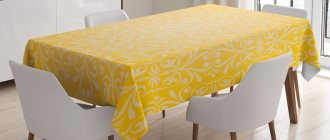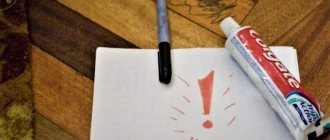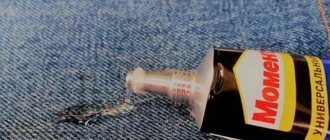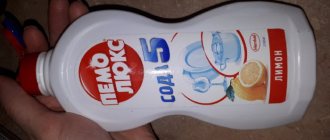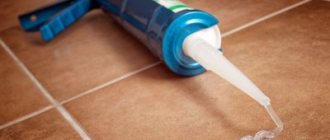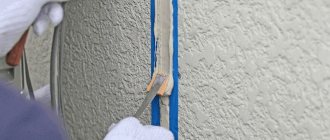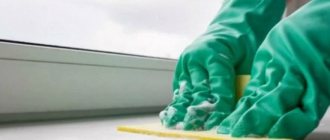A cutting board is an integral part of every kitchen. The most common are wooden materials: they are affordable, easy to use, gentle on the knife blade and environmentally friendly. But wooden surfaces have an unpleasant problem that every user faces: such products absorb odors and particles of the products being cut, and sometimes it is difficult to get rid of them. If used incorrectly and over time, wood planks are also prone to mold. To remove unwanted odors from the surface of the product, you can use one of the following methods.
Important little things
Follow these guidelines when using cutting boards:
- If the product is cracked or a persistent, indelible mold smell appears, it should be replaced;
- Do not wipe the board with a cloth towel: use a paper towel or let it dry naturally;
- Choose products made from compressed wood fiber: they minimally absorb odors and have all the advantages of classic wooden surfaces;
- Glass cutting surfaces do not absorb odors, but their use has a detrimental effect on the knife blade: it quickly wears out and becomes dull;
- Plastic is no less susceptible to contamination and stench than wood and can be unsafe for health;
- Wash the board immediately after use;
- It is advisable to have several items for cutting different products: meat, fish, sliced bread, vegetables, etc.
You can remove odor from a wooden kitchen cutting board using the simplest means at hand, but in addition, you must adhere to the rules of use: this will not only reduce the problem of unpleasant odor, but also prevent the spread of unwanted germs and keep your kitchen clean.
Caring for a wooden cutting board
Our great-grandmothers used such boards, but they still do not lose their relevance in the kitchen and are the most environmentally friendly.
You just need to wash the wooden board in warm water and dry it well, placing it on a horizontal surface. You cannot wash it in the dishwasher; it will soften around the edges and begin to deteriorate, no matter what it is.
Cleaning methods:
· You can easily and safely get rid of stains from berries or vegetables on a wooden cutting board by sprinkling salt and soda on it, and then wiping it with a slice of lemon. This method works!
· to disinfect a wooden board, just wash it and wipe it with a cloth soaked in 3% hydrogen peroxide. There will be no trace of germs left!
Caring for a plastic cutting board
A plastic kitchen board is a practical and affordable accessory, which is very easy to care for: after use, just rinse it well under warm running water with the addition of detergent. Before storing such a board, you need to make sure that it is completely dry, otherwise fungus may appear on it. To prevent yellow stains from remaining on the plastic board, rinse off fruit or vegetable juice immediately. Old stains can be removed like this: rub the board with lemon and microwave for 1 minute, then rinse and dry well.
Lemon is a great cleanser
What does care involve?
Keeping your kitchen clean is an integral part of maintaining household hygiene. Caring for the cutting board requires special attention, since it is on it that the primary processing of products takes place. Lack of proper cleaning is dangerous because pathogenic bacteria that are dangerous to the body will begin to multiply on the surface.
To prevent the appearance of unwanted microbes in the kitchen, housewives need to properly and thoroughly clean the board after each use.
Baking soda and water will help get rid of bacteria and dirt. To prepare a cleaning solution, stir 1 teaspoon of baking soda in 0.5 liters of hot water. Then apply the resulting mixture to the surface and leave for 10-15 minutes. Afterwards, wash the board well under running water. You can replace baking soda with hydrogen peroxide. The solution must maintain similar proportions.
Often women, having seen an advertisement for a cleaning powder that has a miraculous effect, certainly rush to purchase it and check it out. Although such products have a disinfectant effect, it is not recommended to care for kitchen utensils with their help, especially wooden ones. Powder particles remain in microcracks and can get into the dish during cooking.
Removing mold smell from dishes
A persistent food odor is not the only problem you may encounter when washing dishes. It is quite common to detect a musty odor, especially when it comes to wooden cutting boards. Such a find is not only unpleasant, but also dangerous, because it may indicate the appearance of harmful bacteria on the surface of the dishes. To get rid of them, you can use the following methods:
- concentrated lemon juice - they should be used to treat the dishes before washing;
- tea decoction, in which you can pre-soak the dishes for about 30 minutes;
- coffee grounds - apply them to a sponge and then wipe the dishes before washing.
Such techniques will help not only get rid of emerging mold, but also completely remove its smell.
Eliminating fish spirits in the kitchen
The smell will always be there. It may be pronounced or practically absent, but wonderful metamorphoses will occur with our sense of smell and we will always imagine a real stench.
What problems do we face when we are going to cook fish:
- A specific smell is transferred to all utensils required for cooking - cutting boards, knives, frying pans, bowls.
- It is impossible for fish to be in the refrigerator with other products - the smell is instantly transferred to them and to all the internal walls of the refrigerator.
- It is very difficult to wash kitchen towels that someone in the household has used after contact with crucian carp or perch.
- Not everyone likes the too “fragrant” taste of fish soup. How to remove a pronounced taste in the ear? For some this is also a big problem.
It is impossible to hide the fact of frying fish from neighbors. Even with the most powerful hood, you will not be able to avoid the spread of “aromas” throughout the entire entrance. Everything there will be ventilated over time, but in the apartment itself losses are inevitable - wallpaper, carpets, curtains, clothes will become saturated.
Immediately after cooking, it is necessary to take measures to reduce the spread of the fishy smell throughout the entire apartment. Salt, vinegar, lemon, lemon or orange zest will help us.
Salt is a faithful assistant; it wonderfully removes a variety of odors:
- Heat it in a frying pan and leave it on the stove until it cools.
- Half the job is done, then apply the citrus zest, which also needs to be heated in a small frying pan or simply held over the burner. But not everyone will have zest on hand.
- How to remove fish smell? Pour water into a small saucepan and add vinegar or lemon juice. We boil the prepared water, and then thoroughly ventilate the kitchen.
Cleaning pots correctly
Fish soup, fish soup, baked and/or jellied fish - all this is incredibly tasty, and in order not to spoil the mood with a long struggle with fish amber, you can try one of the following methods:
- Soda + water - clean the walls and bottom of the dish in which the fish was boiled/fried with a damp cloth. Place 2 tbsp at the bottom of the container. regular soda. Pour a liter of boiling water and let the water evaporate almost completely, while keeping the lid tightly closed.
- Bay infusion - boil 3-5 bay leaves in a pre-cleaned pan in lightly salted water for 1.5 hours
- Dill seeds against odor - if after the initial wash the smell of fish does not deign to go away, then it is worth driving it away with dill seeds. Wipe the walls and bottom of the dish dry. Sprinkle 100 grams of dill seeds and let them heat well (but do not burn!). Pour a glass of boiling water over the hot seeds and continue boiling for 3 minutes.
- Lemon - cut 1 large citrus into 5-7 parts so that the juice stands out. Sprinkle with a pinch of salt or mustard, pour in 0.5 liters of boiling water and simmer over low heat for 12-15 minutes.
- Pour dry mustard (1 tbsp) into the bottom of a greasy dish. Add 2 tsp. 9% vinegar (it can be replaced with 5 grams of ammonia). Evaporate this entire mixture in 2 liters. boiling water for 30-40 minutes.
Additional tips and tricks for getting rid of unpleasant odors
Always test the cleaning solution on a small, hidden area of the surface first to ensure it is safe.
It is important to dry the wood quickly. Always wipe it dry as water may cause it to crack or warp.
If the wood is made from particle board or plywood (as cabinets and other furniture are often made from), it has likely been coated with pesticides and contains formaldehyde adhesives. If the smell does not go away, it is quite possible that this is the cause, and to get rid of the problem, a complete replacement of the wood will be required. You can control the odor by keeping a deodorizer (such as a bowl of baking soda) in your cupboard at all times and replacing it regularly.
Found a violation? Report content
Wood cleaning instructions
For general cleaning of wood cabinet surfaces, use dishwashing liquid. Dip the rag into the soapy water, wring it out so it doesn't drip, and wipe the surface of the wood. Wipe the area with a damp cloth that has just been dipped in water, then blot the wood with a dry cloth. To save time, combine steps 1 and 2 by adding a little white vinegar to the soapy water.
Mix one part white vinegar with four parts water. Place the solution in a spray bottle and spray the wood. Wipe the area with a damp cloth soaked in water. After this, blot the wood dry.
Another way to disinfect wood is to use 3% hydrogen peroxide. Pour it into a spray bottle and spray the tree. Wipe the area with a damp cloth soaked in water, then blot the wood with a dry cloth.
After cleaning, leave the cabinet door open until the wood is completely dry. If any odor remains after the wood has dried, leave a bowl filled with white vinegar or coffee grounds next to the wood or on one of the shelves overnight with the cabinet door closed. Keep in mind that although the coffee grounds will remove the odor, the coffee smell will remain in its place, while the vinegar smell will disappear. Repeat this process until the odor is completely removed.
Another option for deodorizing wood is to sprinkle baking soda on it. Leave it overnight, then sweep or vacuum it.
Treat with hydrogen peroxide
Hydrogen peroxide is an effective independent remedy in the fight against grease, odors, stains and some types of microorganisms.
Boil 0.5 liters of water, dissolve hydrogen peroxide in it and wash the cutting board with the resulting solution.
No matter how ideal the housewife is, she will not be able to avoid dirtying the cutting board. Of course, you can just buy a new one every time, but this is not necessary, because cleaning the old one is not difficult at all.
- Author: iarriba
Rate this article:
- 5
- 4
- 3
- 2
- 1
(1 vote, average: 5 out of 5)
Share with your friends!
We use vinegar solution
Mix vinegar with water. Pour the resulting solution into a spray bottle. Spray it on areas of furniture that smell like cigarettes.
Wipe off excess liquid with a soft cloth. Then air dry the furniture by opening the vents or windows in the room.
If you were unable to eliminate the tobacco smell the first time, repeat the procedure until the stench disappears. Vinegar is excellent at absorbing unwanted odors.
Many people who love to cook admit that they hate washing dishes. This is understandable: after all, cooking is a creative, interesting and exciting process. But subsequent cleaning is a purely mechanical task that takes time and effort. Often, after cutting some products, it takes a long time to get rid of their smell, which is literally absorbed into the wooden boards and haunts the owner for a long time.
Use grated apple
If after some time of use the cutting board begins to smell unpleasant, this is not a reason to buy a new one. You can get rid of the unpleasant aroma using ordinary apples, and their variety does not matter.
You need to grate a few apples, spread the resulting pulp over the surface of the board, and leave for 5 minutes. and simply rinse with water. There is no need to leave the apples for a longer time; the iron will oxidize and dark marks will appear on the surface of the board.
What will it take to clean the board?
It is extremely important to clean the boards immediately after you finish cooking. The longer wooden boards remain dirty, the more food juices are absorbed into them. And, of course, the smell will be more persistent.
For cleaning you will need the following:
- a small scraper or stiff brush;
- woven household napkin or thick sponge;
- dishwashing liquid;
- warm water.
You can also use a thick household sponge to clean the board.
Odor Removal Tips
Particularly odorous foods include fish, fresh meat, onions, and garlic. It's not just the food you've cut on it that can smell unpleasant; it can also smell musty. There are a few simple secrets on how to get rid of the smell on a cutting board, using the products that are probably in every kitchen.
Fighting fish odor: 3 effective ways
- Before cutting the fish, wipe the working surface of the board with a slice of lemon or 9% vinegar. The same can be done after cutting the fish. By the way, this wipe will also help remove the smell of onions and garlic.
- To get rid of the strong fishy smell that comes from a wooden cutting board, you can wash it in a saline solution (4 tablespoons of salt per 1 liter) or in warm water with vinegar (1 tablespoon of vinegar per 1 liter). The same method also works for garlic.
- How to remove the smell of herring from a cutting board? Used tea leaves or dry mustard will help get rid of it - wipe the board with the powder. Cool milk will also work—wet a sponge with it and rub it over the surface.
Fighting the smell of raw meat
- You can soak the board in hot water for half an hour, after dissolving crushed charcoal in it (100 g of coal per 1 liter). If you don't have coal on hand, throw in a pinch of coffee.
- After soaking, wash the board as usual.
- If a plastic board smells like meat, wipe it with baking soda or vinegar, then rinse.
- When your board smells like mold, don’t rush to throw it away! Try rubbing it thoroughly with coffee grounds and wait 3-4 minutes. Then wash with hot water.
What will you need to prepare a disinfectant?
A solution that disinfects wooden cutting boards is quite easy to make yourself.
To prepare the solution you will need the following:
- chlorine bleach;
- hydrogen peroxide 3%;
- warm water;
- convenient bowl and teaspoon.
If you're concerned that you won't be able to clean the chlorine off your board, replace the bleach with white vinegar.
Preventing the appearance of persistent odors on dishes
So that you do not have to additionally wash and clean dishes to remove unpleasant odors, you can use the following recommendations:
- Before placing the fish on a plate or board, treat the dish with a lemon wedge. Carry out the same procedure immediately after finishing cooking or eating.
- When choosing cutting boards, give preference to glass or plastic options that do not absorb odors. As for wooden products, it is sometimes simply impossible to completely get rid of the smell ingrained in them. Therefore, use them only for slicing bread.
- Wash dishes immediately after eating or preparing food, if we are talking about boards. If you leave dishes with a smell “for tomorrow”, it will be much more difficult to eliminate it.
Using these tips, as well as our recommendations for removing odors from dishes, will keep them clean and fresh. The next meal will not cause you discomfort, and a pleasant fresh aroma will reign in the kitchen.
Treat with vinegar
Using vinegar, you can get rid of not only stains and odors on your cutting board, but also staphylococcus and E. coli. For this, use table vinegar rather than essence - this will avoid the risk of damaging your hands, and a concentration of 9% is more than enough. You can even dilute it with water in a 1:1 ratio.
Apply vinegar to the stain or the entire surface of the cutting board, leave for 10 minutes, and then rinse thoroughly with water. You can also pour it into a spray bottle and spray your cutting board after each use.
To enhance the effect after vinegar, wipe the surface with hydrogen peroxide and then rinse with water.
